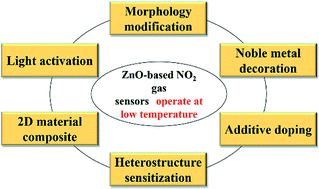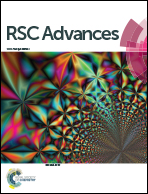Low-temperature operating ZnO-based NO2 sensors: a review
Abstract
Owing to its excellent physical and chemical properties, ZnO has been considered to be a promising material for development of NO2 sensors with high sensitivity, and fast response and recovery. However, due to the low activity of ZnO at low temperature, most of the current work is focused on detecting NO2 at high operating temperatures (200–500 °C), which will inevitably increase energy consumption and shorten the lifetime of sensors. In order to overcome these problems and improve the practicality of ZnO-based NO2 sensors, it is necessary to systematically understand the effective strategies and mechanisms of low-temperature NO2 detection of ZnO sensors. This paper reviews the latest research progress of low-temperature ZnO nanomaterial-based NO2 gas sensors. Several efficient strategies to achieve low-temperature NO2 detection (such as morphology modification, noble metal decoration, additive doping, heterostructure sensitization, two-dimensional material composites, and light activation) and corresponding sensing mechanisms (such as depletion layer theory, grain boundary barrier theory, spill-over effects) are also introduced. Finally, the challenges and future development directions of low-temperature ZnO-based NO2 sensors are outlined.

- This article is part of the themed collection: 2020 Reviews in RSC Advances


 Please wait while we load your content...
Please wait while we load your content...